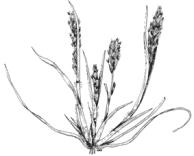"Special Status Species" is a universal term used in the scientific community for species that are considered sufficiently rare that they require special consideration and/or protection and should be, or have been, listed as rare, threatened or endangered by the Federal and/or State governments.
The Federal and State Endangered Species Acts frequently use the following terms when referring to special status species:

Swainson's Hawk. Buteo swainson
Listed as "Threatened" by the State government and provided protection under the California Endangered Species Act (CESA).
| - Rare (State) - this is technically used only for plants, as defined under the California Native Plant Protection Act. When the California Endangered Species Act (CESA) was enacted, all animals with a rare classification were reclassified as threatened; however, rare plants were not.
- Species of Concern (Federal) - species for which existing information indicates it may warrant listing as threatened or endangered but for which substantial information for listing is still lacking.
- Species of Special Concern (State) - special plant/animal species tracked by California Natural Diversity Data Base regardless of their legal or protection status.
- Species - any subspecies of fish, wildlife, insect, or plants, and any distinct population segment of any species, which interbreeds when mature.
- Endangered (Federal & State) - any species that is in danger of extinction throughout all or a significant portion of its range. (Except insect pests - Feds).
- Threatened (Federal & State) - any species likely to become an endangered species within the foreseeable future throughout all or a significant portion of its range.
|
|

Sacramento Orcutt Grass. Orcuttia viscida
Listed as "Endangered" by both State & Federal governments (CDFW graphic).
|
